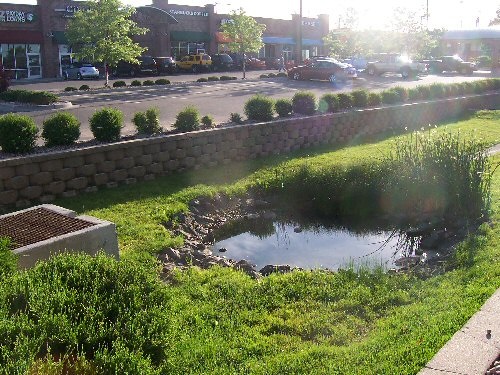Low Impact Development
What is Low Impact Development?
Low impact development (LID) is an alternative way of developing land and managing stormwater that is aimed at minimizing the impacts of urbanization on natural habitats and hydrology. The creation of hardened surfaces such as roads, parking lots and rooftops in combination with culverts and other structures that alter the natural movement of water all contribute to degraded rivers and streams.
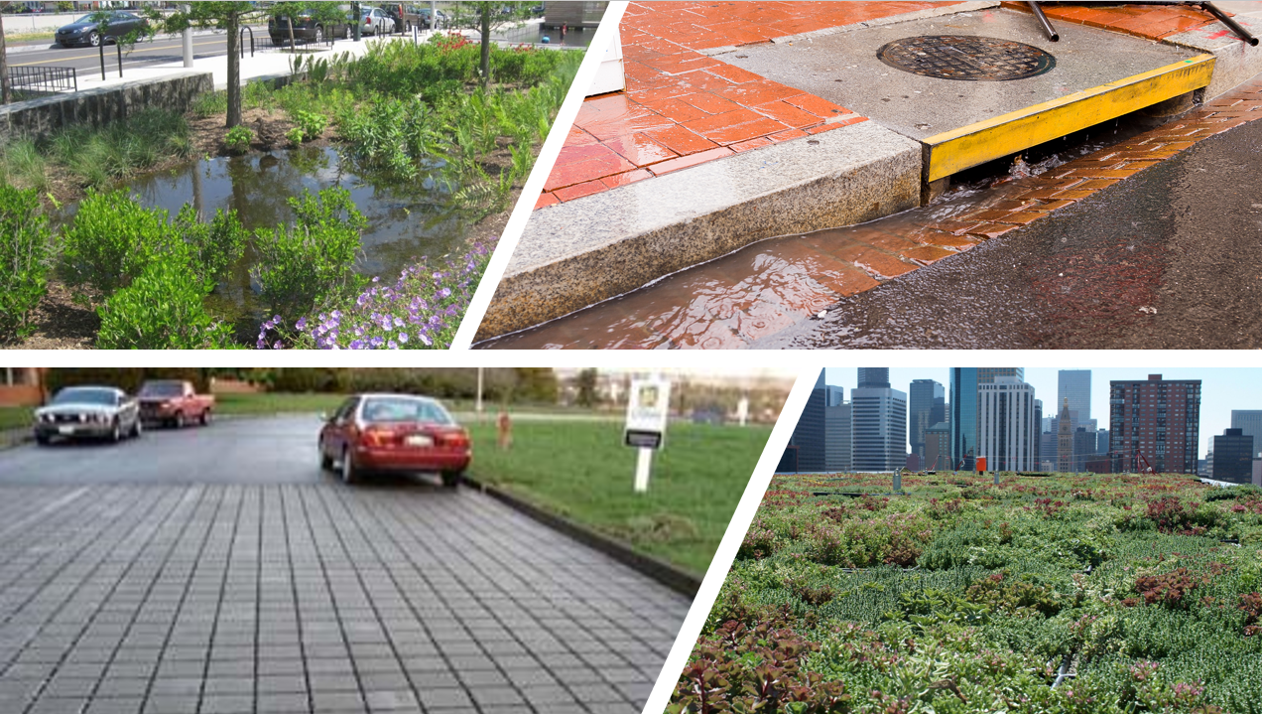
What is the Goal of Low Impact Development?
The overall goal of LID is to design with nature in mind; work with the natural landscape, hydrology and unique features of a site to avoid unnecessary water pollution, environmental degradation, and flooding. LID accomplishes this by controlling runoff close to the point of generation and retaining more water on the site where it falls, rather than funneling it into pipes that drain into local waterways. LID is all about avoiding, reducing, and managing the adverse impacts of development or redevelopment sites while still enabling the intended use of the site and enhancing the development relative to conventional development.
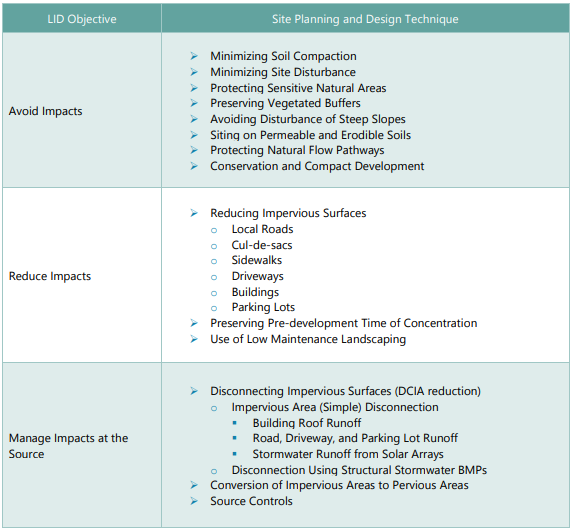
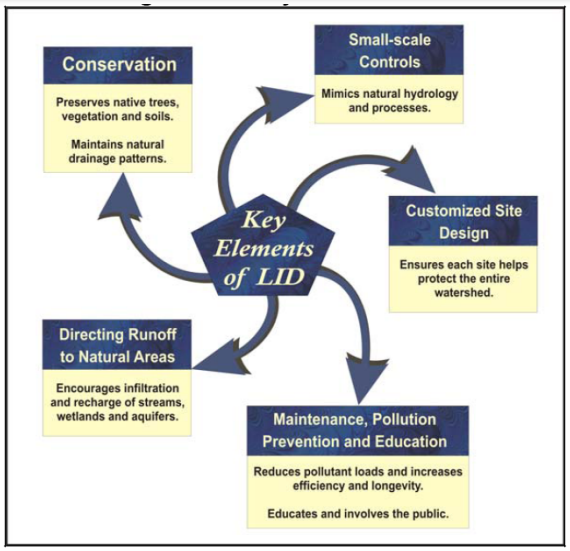

Benefits of Low Impact Development
Low Impact Development provides many environmental and economic benefits including improved water quality, reduced number of costly flooding events, restored aquatic habitat, improved groundwater recharge, and enhanced neighborhood beauty. Click on the image below to learn more from the EPA about the benefits of Low Impact Development!

Low Impact Development Initiatives in Manchester
Below is a list of some existing and planned Low Impact Development initiatives in the Town of Manchester. Click the following link to open a pdf containing definitions and more information about the various types of LID systems listed below.
- Biofiltration area in Buckley Elementary School parking lot
- Detention basin on Spencer Street
- Bioswale at Manchester Country Club
- Retention basin in New State Road Park
- Planned bioretention basin in Town Hall parking lot
- Planned rain garden on Oak Grove Street
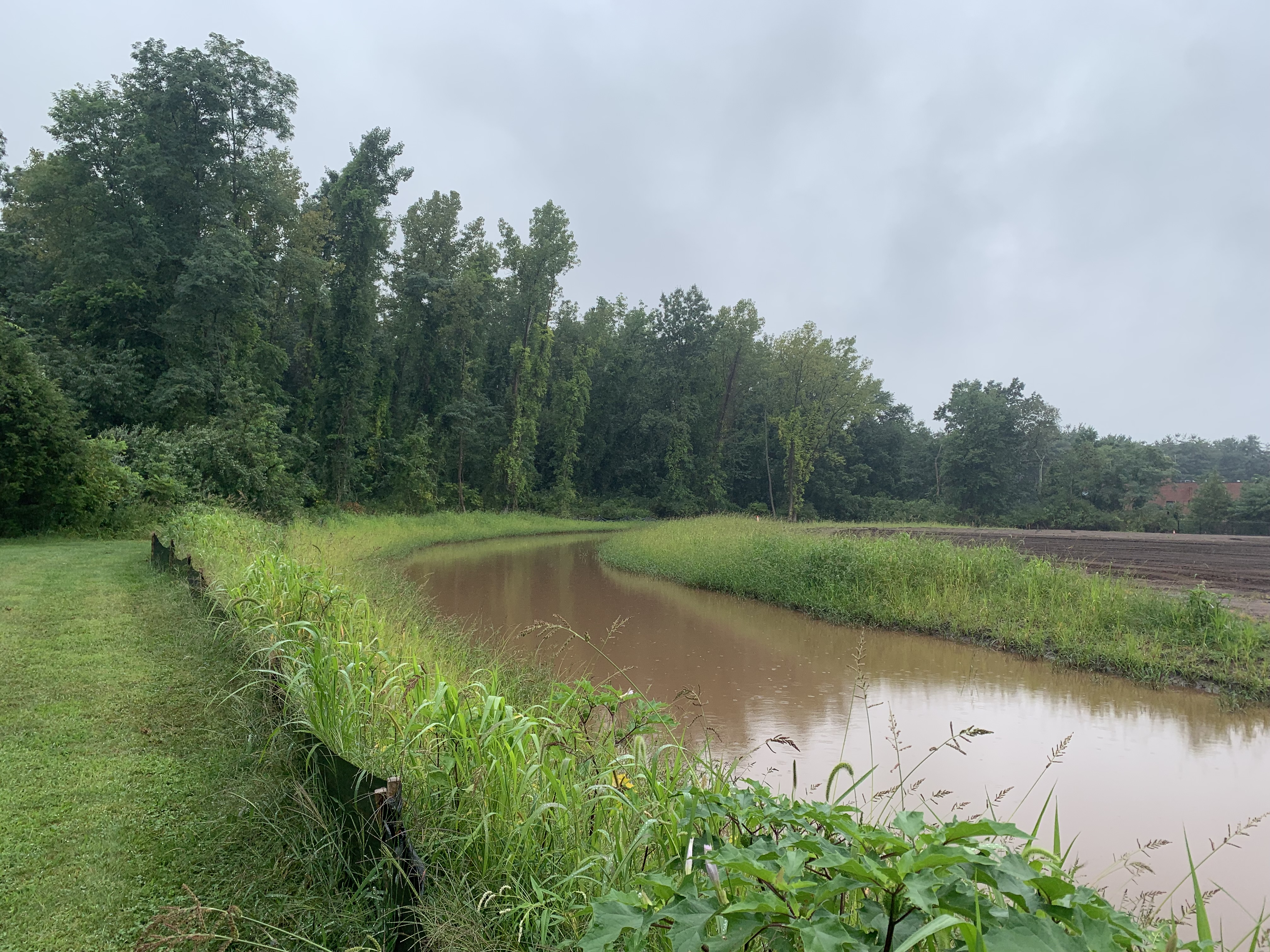
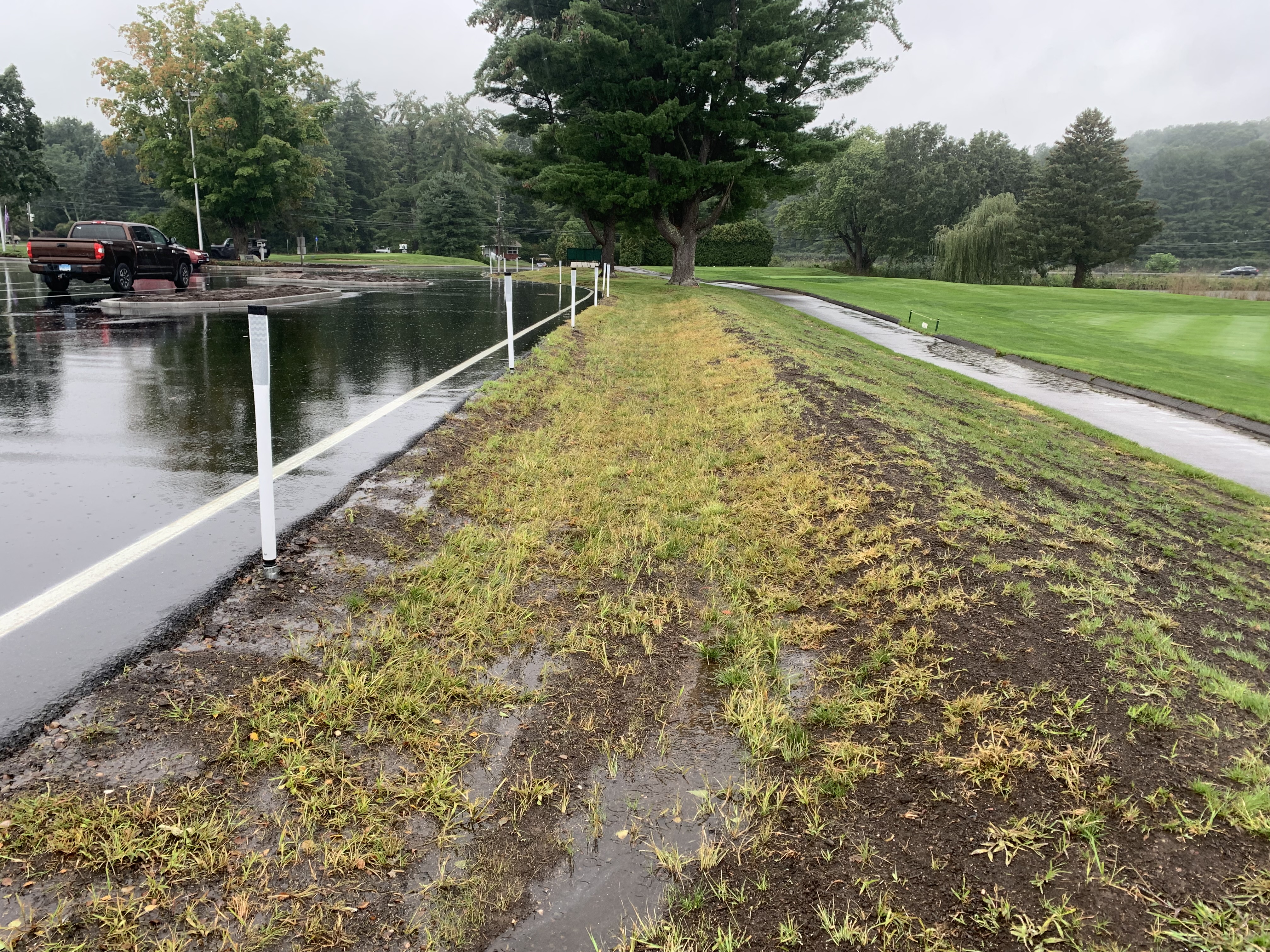
Helping at Home
Explore the tools and information available to residents below to make environmentally responsible choices and help reduce runoff. From rain barrels and permeable pavement to vegetated riparian areas and rain gardens, these resources empower residents to play a vital role in protecting our environment.
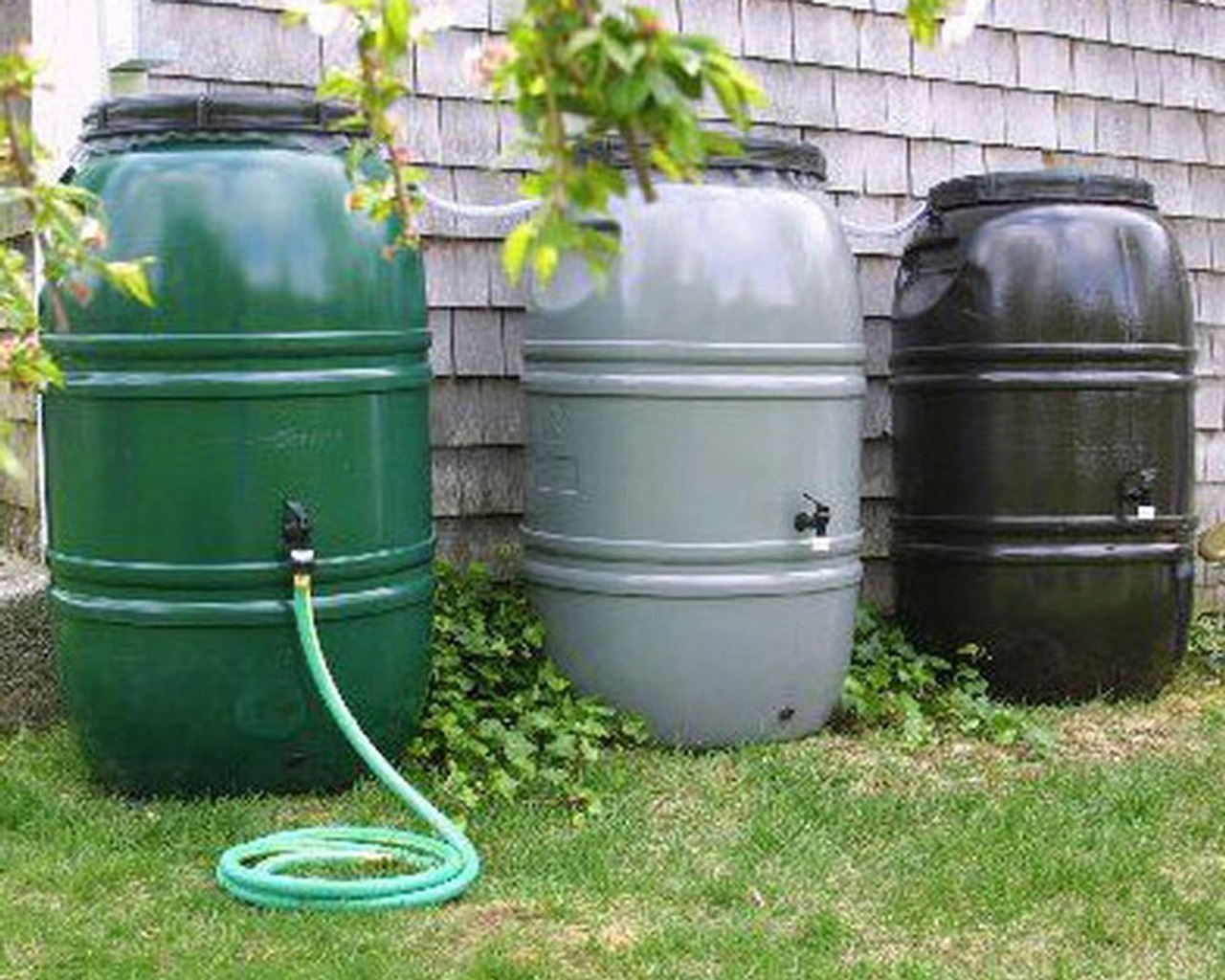
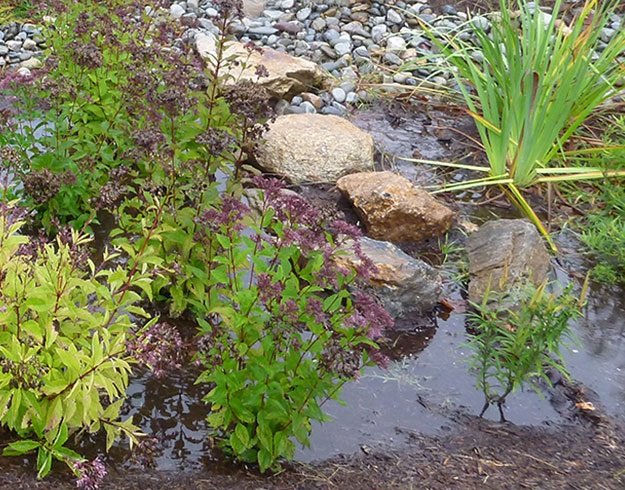
Commercial Resources
Find below a list of commercial LID resources.
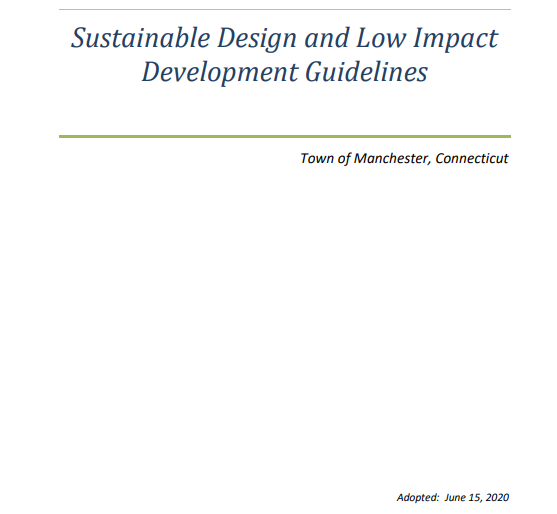
Click the image above to be brought to the Town of Manchester Sustainable Design and Low Impact Development Guidelines. These guidelines aim to encourage LID implementation for new development projects in town.
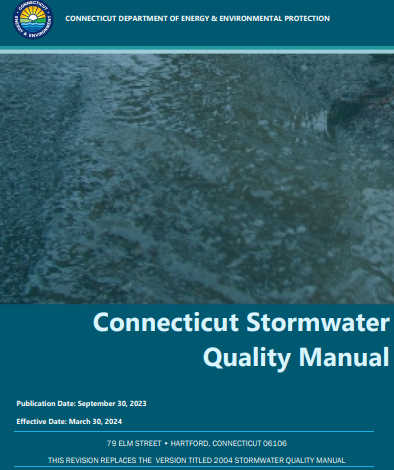
Click the image above to open a pdf of the Connecticut Department of Energy & Environmental Protection Connecticut Stormwater Quality Manual (Effective March 30, 2024). You can also Click Here to be brought to the CT DEEP website for more information.
Frequently Asked Questions
Does LID take up a lot of land?
In many cases, Low Impact Development techniques can reduce the amount of land devoted to stormwater management, because smaller detention ponds are necessary. Green roofs take up no extra space, and techniques such as bioretention areas and swales can also help to fulfill site landscaping/open space requirements. Narrower roadways and smaller parking lots actually conserve land.
What is the cost of a Low Impact Development approach?
Some LID techniques can cost more than conventional approaches, but overall LID is cost-competitive because it can reduce the size of stormwater pipes and downstream ponds, reduce the amount spent on paving, and enhance site aesthetics and value. In the case of green roofs, the life-cycle cost is lower than conventional roofs due to a much longer life span and considerable savings of heating and cooling costs.
What are rain gardens?
Rain gardens (also known as bioretention cells) are vegetated depressions that store and infiltrate runoff. Rain gardens are designed to encourage vegetative uptake of stormwater to reduce runoff volume and pollutant concentrations. You can find more information about rain gardens on the UConn CLEAR webpage.
Rain Gardens: A Design Guide for Connecticut and New England Homeowners
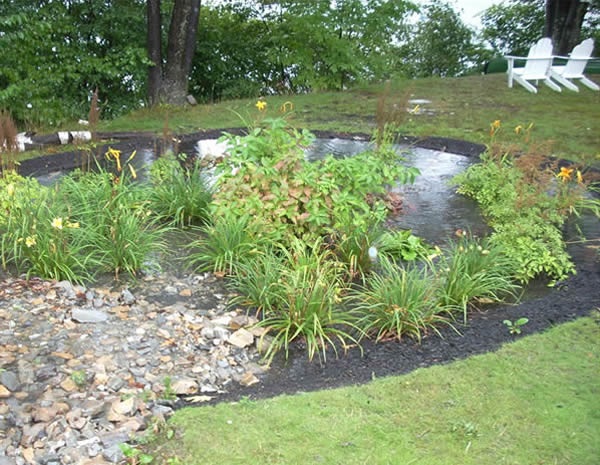
What is pervious pavement?
Pervious (or permeable) pavement reduces stormwater runoff volume, velocity, and pollutants by allowing water to infiltrate through the pavement, into the ground. into the sub-surfaces below parking areas. Permeable pavement can be used for most applications except for roads with high traffic and/or heavy trucks. Common places to implement pervious pavement include...
- Sidewalks and other pedestrian areas
- Low traffic residential roads
- Parking lots
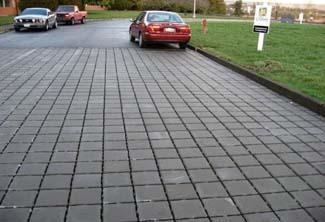
What is a bioswale?
Bioswales (often called vegetated swales) are broad, shallow channels designed to convey and infiltrate stormwater runoff. Swales can be used as a preferred alternative to closed, non-infiltrating drainage systems.
